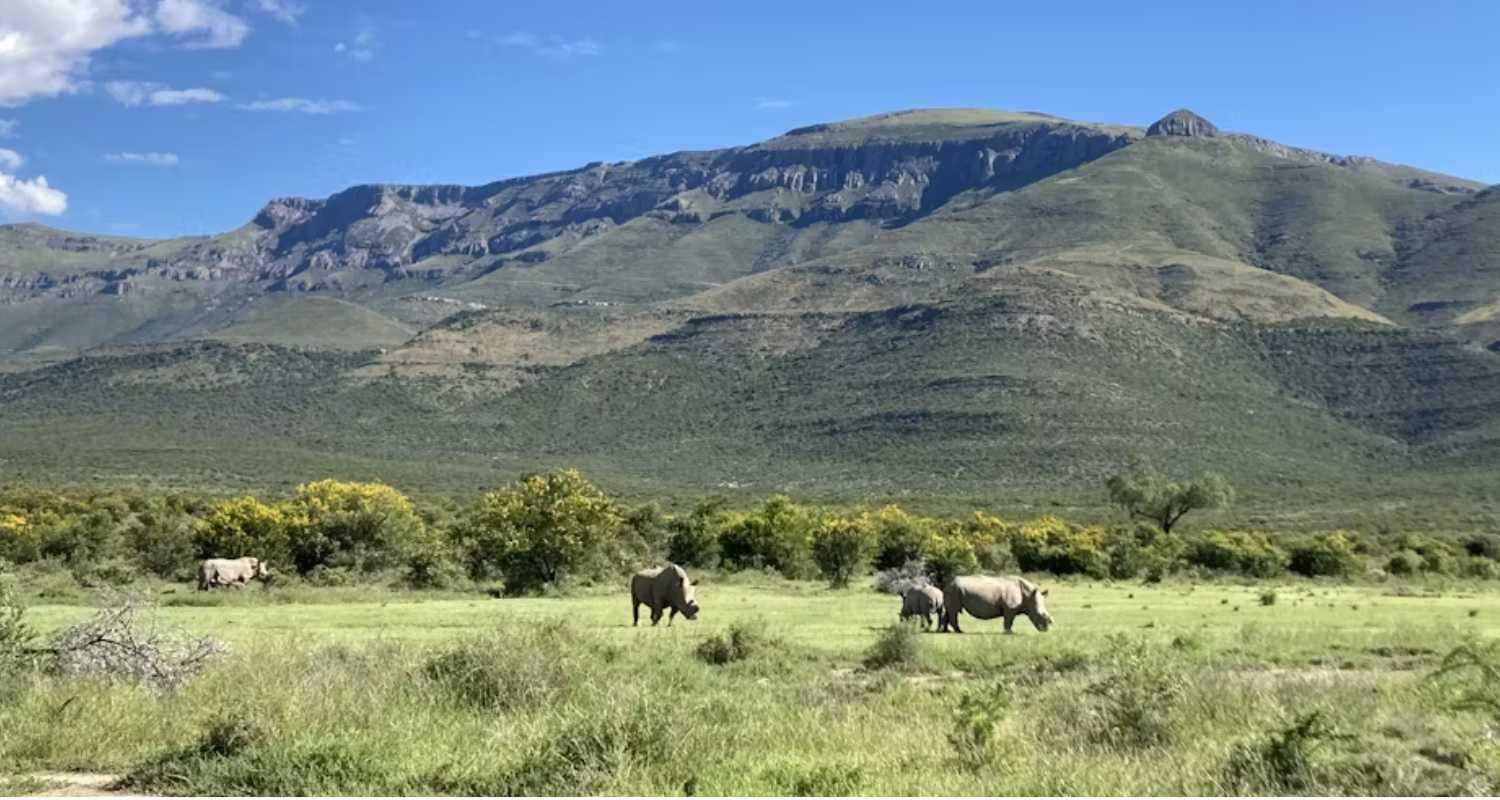This month’s featured scorpion species is the rough burrowing scorpion. This is one of the larger scorpion species found in the area. Typically, they average around 100mm in length with the tail extended. However, in some regions they have been known to reach almost 140mm in total length. Colouration can be quite variable. Typically, most specimens are orange to orange-brown in colour, with the pincers having darker tips. In some populations they are overall a darker brown with pale legs.
These are solid stocky scorpions, equipped with large bulbous pincers and a relatively thick tail with a strongly curved sting. The females have larger and more rounded pincers than males. Proportionally the males have much larger tails.

This species is most often found in woodland habitat in rocky areas and along rocky ridges. However, they do also occur on flatter ground with no rock and in parts of their range they are found in grassland habitat. In South Africa they are found throughout much of Limpopo and Mpumalanga provinces, northern Gauteng and into the eastern parts of the North West province, extending southwards to Kimberley.
They live either under rocks in shallows burrows or deeper burrows in open ground. Open burrows often have piles of freshly excavated soil at the entrance as well as scatterings of dried millipede rings, remnants of past meals.
Females and immature scorpions are largely sedentary in their habits and seldom wander far from their burrows. Males on the other hand do wander further afield in search of a female. They become active from around October through to January and are most seen on evenings before thunderstorms. Females have their young in January and February.
These scorpions are large and assume a rather intimating defensive posture if threatened. Their stings are very painful. In most cases the pain subsides after an hour or two. However, in more serious cases the pain and swelling may persist for several days. No systemic symptoms have been recorded and these scorpions are not considered to be medically significant.
As always please see below for a few useful tips on how to minimize your risk of having a painful encounter with one of these fascinating creatures.
Sting prevention
- Always use a torch when walking around at night and wear closed shoes.
- Shake out shoes before putting them on, particularly if they have been left outside for any length of time.
- Always be conscious of where you are placing your hands. Whether it is grabbing some wood off the wood pile for your Friday afternoon braai or moving those storage boxes in the garage, wearing gloves when performing these kinds of tasks will offer an additional layer of protection.
- Remember to shake out any items of clothing, towels, bags, or any other kind of materials that may have been left lying on the ground.
- Keep doors and screen doors closed particularly at night to prevent scorpions from entering your home. There are often gaps under doors and it is beneficial to fit aluminium door seals (draft stoppers) with the rubber strip to prevent scorpions and snakes from entering under the door.
- We live in an area where many homes and lodges have outdoor entertainment areas. It is advisable to always check patio furniture thoroughly before use.
For more information on venomous animals, awareness training and talks, as well as a professional 24hrs problem snake rescue service, contact the author at Wildlife Safety Solutions: 073 934 6156; info@wildlifesafetysolutions.co.za; www.wildlifesafetysolutions.co.za, FB Wildlife Safety Solutions, Instagram wildlife_safety_solutions












